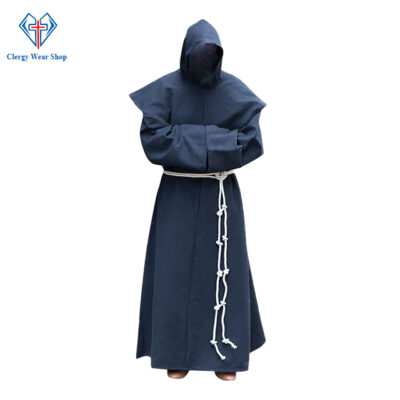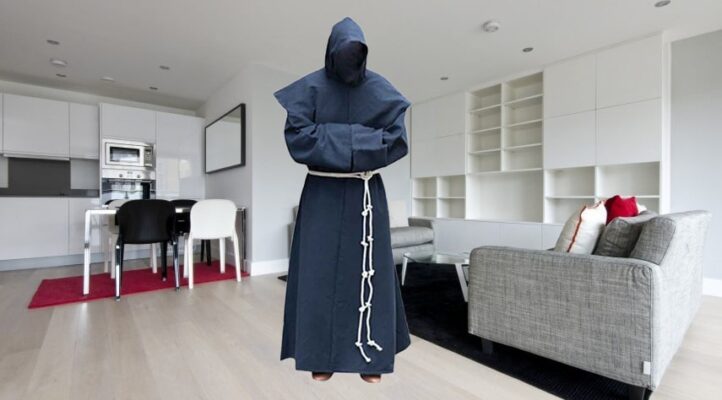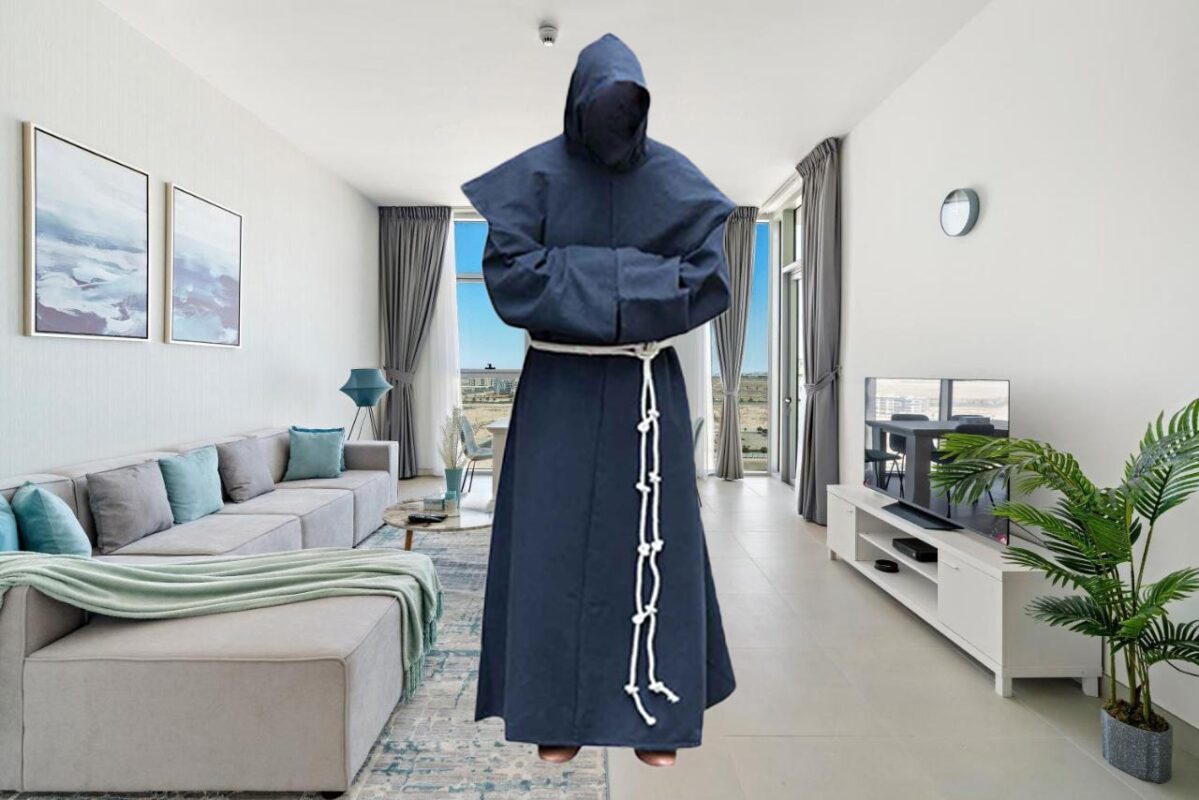Clergy Robes for Men
What is a Monk’s Habit
What is a Monk’s Habit
Monastic life has long been associated with a distinct form of clothing known as a “monk’s habit.” This article delves into the history, symbolism, components, and modern adaptations of the monk’s habit, shedding light on its significance in the lives of those who embrace this vocation. Shop Here!
The History of Monastic Clothing

Early Monastic Attire
The origins of the monk’s habit can be traced back to the early days of Christian monasticism. The Desert Fathers and early Christian hermits wore simple garments, often made from rough fabric, as a symbol of their renunciation of the world and dedication to a life of prayer and asceticism. Shop Here!
The Influence of St. Benedict
St. Benedict of Nursia, the founder of Western monasticism, played a pivotal role in shaping the design and symbolism of the monk’s habit. His Rule, written in the 6th century, emphasized the virtues of humility, simplicity, and obedience. The habit became a visible sign of these values, fostering a sense of unity among the monastic communities.
Regional Variations
Over time, different monastic orders and regions developed their unique variations of the habit. The Benedictines, Dominicans, Franciscans, and others each had their distinctive styles, colors, and rules regarding the habit’s design. Despite these variations, the core symbolism remained consistent across different orders. Shop Here!
Humility and Simplicity
The plainness of the monk’s habit represents the virtue of humility, reminding the monks of their commitment to live without vanity or pride. It serves as a constant reminder to focus on the inner journey rather than outward appearances. Shop Here!
Obedience and Commitment
Wearing the habit is a sign of the monk’s obedience to the Rule of their order and their commitment to a life of service to God and others. It symbolizes the monk’s willingness to submit to the higher authority and embrace the communal nature of monastic life.
Identity and Unity
The habit serves as a uniform, identifying the monk as a member of a specific religious order. It fosters a sense of belonging and unity among the monastic community, strengthening their collective purpose and mission. Shop Here!
The Components of a Monk’s Habit

Tunic
The tunic is the main garment of the habit, typically a loose-fitting, ankle-length robe. It symbolizes the simplicity and poverty of the monastic life.
Scapular
The scapular is a rectangular piece of cloth that hangs from the shoulders, front, and back. It serves as a work apron, signifying the commitment to labor and service.
Cowl/Hood
The cowl or hood is a large piece of fabric attached to the tunic, often worn to cover the head during prayer and contemplation. Shop Here!
Belt/Cincture
The belt or cincture is a cord or rope tied around the waist, representing the monk’s commitment to chastity and self-discipline.
Footwear
Monks traditionally wear simple sandals or closed shoes, emphasizing their detachment from worldly comforts.
Undergarments
Monastics also wear undergarments, underscoring the importance of modesty and simplicity even in unseen aspects of life.
Modern Adaptations and Practicality
Changes in Material and Color
In modern times, the traditional rough fabric has been replaced with more comfortable and durable materials. Some orders have adapted their habits to suit different climates and practical needs.
Comfort and Functionality
While the symbolic significance remains, contemporary habits are designed to allow for greater comfort and ease of movement, enabling monks to engage in their daily activities more efficiently.
Contemporary Habits for Female Monastics
Female monastics, depending on the order, may wear habits that have variations in style to accommodate their needs while adhering to the core symbolism.
Maintaining Tradition in a Changing World
Challenges and Criticisms
In recent years, some monastic communities faced debates regarding the relevance and practicality of wearing the habit in modern society. Critics argue that it may create barriers in engaging with the outside world. Shop Here!
Embracing Diversity and Inclusivity
Many monastic orders have embraced diversity and inclusivity, allowing for cultural adaptations while maintaining the essential symbolism of the habit.
The Habit as a Witness to Faith
For some monastics, wearing the habit is an act of witness to their faith and a reminder to the world of the spiritual values they uphold.
The Habit’s Role in Monastic Life

Daily Life and Rituals
The habit becomes an integral part of a monk’s daily life, influencing their interactions, routines, and participation in communal prayers and liturgies.
The Habit as a Sign of Vocation
For those aspiring to join a monastic community, the habit represents a visible sign of their commitment and dedication to the monastic way of life.
Impact on Spiritual Growth
Wearing the habit can act as a spiritual discipline, reminding the monks of their purpose and calling, and aiding in their spiritual growth and transformation.
The monk’s habit is not merely a piece of clothing but a profound symbol of the monastic journey. Rooted in history, rich in symbolism, and adaptable to changing times, the habit remains a tangible expression of the monk’s commitment to a life of prayer, simplicity, and service to God and others.
Frequently Asked Questions (FAQs)
Do all monastic traditions have the same habit?
No, different monastic orders have their unique habits with varying styles and colors.
Is wearing a habit mandatory for all monks?
Some orders require their members to wear the habit at all times, while others allow certain exceptions.
Why do some habits have specific colors?
The colors often represent the order’s values or liturgical significance.
Are there any specific rules regarding the habit’s design?
Yes, each monastic order typically has rules and guidelines for their habit’s design and wearing.
How does wearing a habit affect a monk’s daily routine?
Wearing the habit serves as a constant reminder of the monk’s vocation, influencing their daily activities and spiritual practices.

 Clergy Cassocks for Men
Clergy Cassocks for Men Clergy Cassocks for Women
Clergy Cassocks for Women Clergy Robes for Women
Clergy Robes for Women Clergy Shirts for Men
Clergy Shirts for Men Clergy Shirts for Women
Clergy Shirts for Women